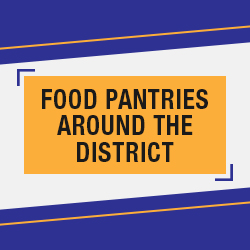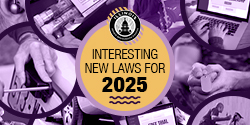 CENTREVILLE - In an effort to ensure disadvantaged families receive meal assistance, State Senator Christopher Belt (D-Centreville) announced Wednesday that funding is available for organization that support children who are in need from the Child and Adult Care Program.
CENTREVILLE - In an effort to ensure disadvantaged families receive meal assistance, State Senator Christopher Belt (D-Centreville) announced Wednesday that funding is available for organization that support children who are in need from the Child and Adult Care Program.
“Reducing food insecurity among low-income children is a priority and core mission of our state,” Belt said. “We want to continue to ensure our current reality does not hinder the meal assistance that many families rely on.”
The program assists child care centers, Head Start programs, before and after school programs, emergency shelters, and daycare home providers with funding to serve meals to children. All participating child care centers must provide meals to enrolled children at no additional cost.
The continuing COVID-19 pandemic has caused even more families to depend on federally funded nutrition programs. More than 1,000 child care centers across Illinois will be able to provide children with healthy meals.
Individuals in households who participate in Temporary Assistance for Needy Families or the Supplemental Nutrition Assistance Program are automatically eligible to receive free meal benefits. The USDA Household Income Eligibility Guidelines determine eligibility to receive free meal benefits for families that do not receive TANF or SNAP benefits.
If a household’s income falls within or below the listed guidelines, a member of the household should contact their child care center or day care home provider to learn about benefits of the CACFP. They may be required to complete an application and provide income, TANF or SNAP information.
Children enrolled in Head Start programs at approved facilities and foster care children who are legal responsibilities of the state or court will also receive free meal benefits. Parents or guardians should contact their child care center or day care home provider to find out if they can participate in CACFP.
Income Eligibility Guidelines Effective from July 1, 2020, to June 30, 2021
|
Income Eligibility Guidelines |
|||||||||||
|
Effective from July 1, 2020, to June 30, 2021 |
|||||||||||
|
|
Free Meals |
|
Reduced-Price Meals |
||||||||
|
130% Federal Poverty Guideline |
185% Federal Poverty Guideline |
||||||||||
|
Household Size |
Annual |
Monthly |
Twice Per Month |
Every Two Weeks |
Weekly |
Household Size |
Annual |
Monthly |
Twice Per Month |
Every Two Weeks |
Weekly |
|
1 |
16,588 |
1,383 |
692 |
638 |
319 |
1 |
23,606 |
1,968 |
984 |
908 |
454 |
|
2 |
22,412 |
1,868 |
934 |
862 |
431 |
2 |
31,894 |
2,658 |
1,329 |
1,227 |
614 |
|
3 |
28,236 |
2,353 |
1,177 |
1,086 |
543 |
3 |
40,182 |
3,349 |
1,675 |
1,546 |
773 |
|
4 |
34,060 |
2,839 |
1,420 |
1,310 |
655 |
4 |
48,470 |
4,040 |
2,020 |
1,865 |
933 |
|
5 |
39,884 |
3,324 |
1,662 |
1,534 |
767 |
5 |
56,758 |
4,730 |
2,365 |
2,183 |
1,092 |
|
6 |
45,708 |
3,809 |
1,905 |
1,758 |
879 |
6 |
65,046 |
5,421 |
2,711 |
2,502 |
1,251 |
|
7 |
51,532 |
4,295 |
2,148 |
1,982 |
991 |
7 |
73,334 |
6,112 |
3,056 |
2,821 |
1,411 |
|
8 |
57,356 |
4,780 |
2,390 |
2,206 |
1,103 |
8 |
81,622 |
6,802 |
3,401 |
3,140 |
1,570 |
|
For each additional family member, add |
5,824 |
486 |
243 |
224 |
112 |
For each additional family member, add |
8,288 |
691 |
346 |
319 |
160 |
Child care institutions can learn more and apply for the program here: https://www.isbe.net/Pages/Nutrition-and-Wellness-Child-Care-Institutions.aspx
Family day care homes can learn more here: https://www.isbe.net/Pages/Family-Day-Care-Homes.aspx
Those interested in the adult care portion of the program can visit: https://www2.illinois.gov/aging/programs/Pages/Child-and-Adult-Care-Food-Program-(CACFP).aspx













 © 2026 Illinois Senate Democratic Caucus
© 2026 Illinois Senate Democratic Caucus